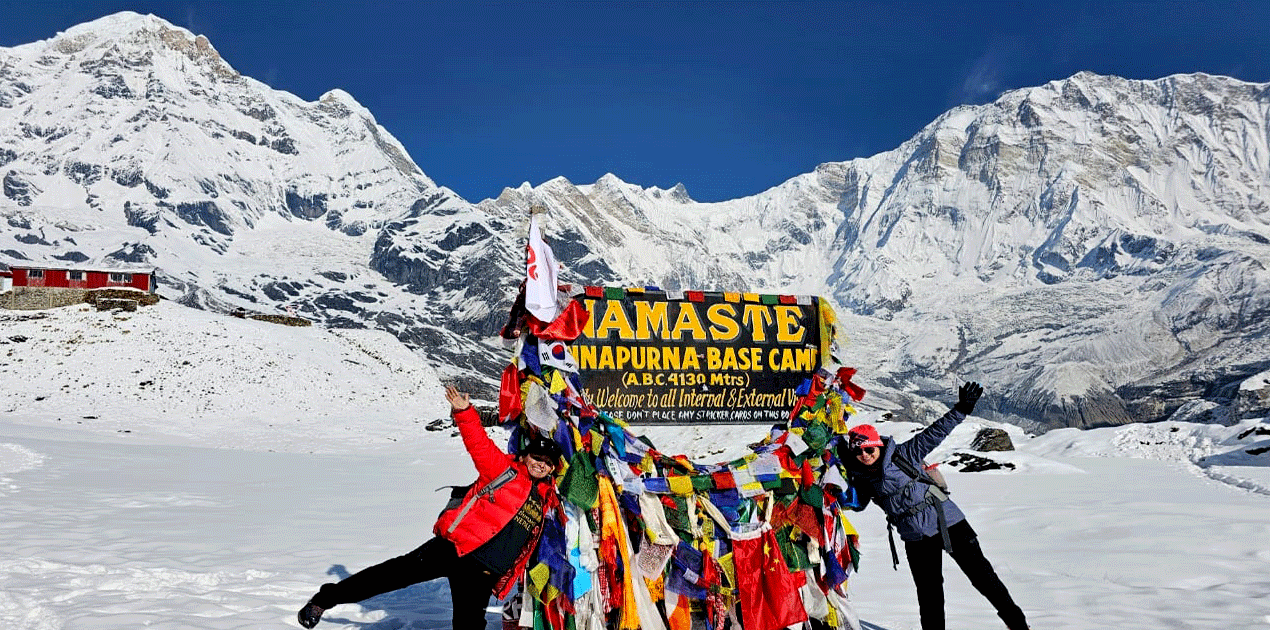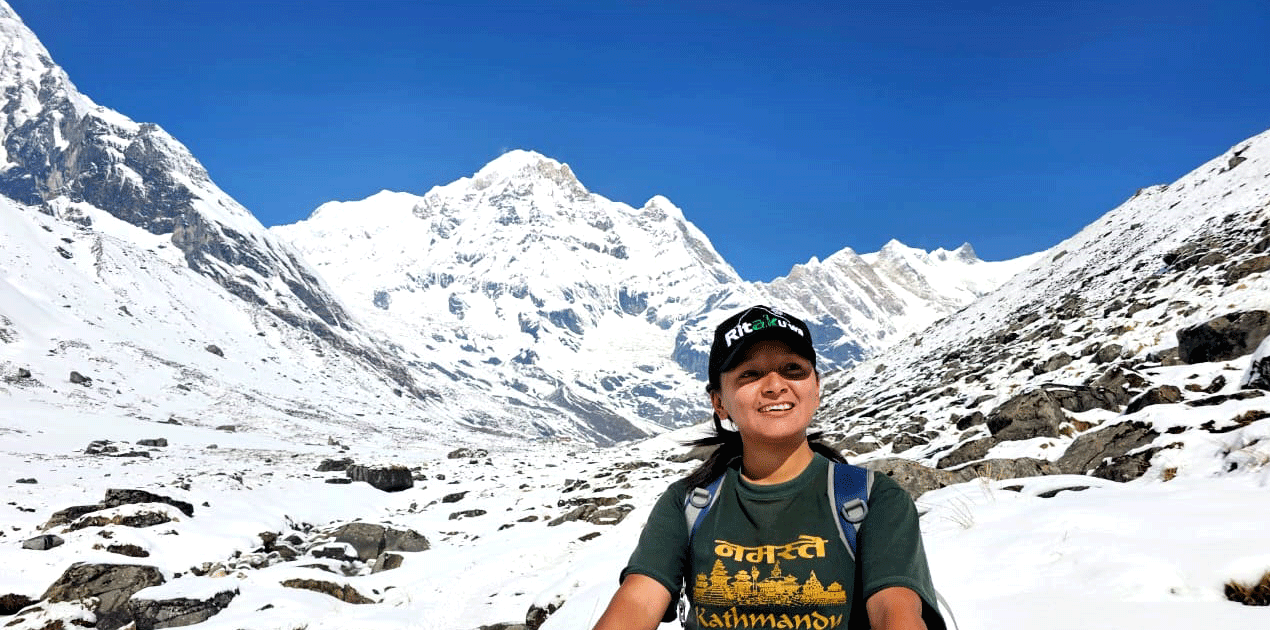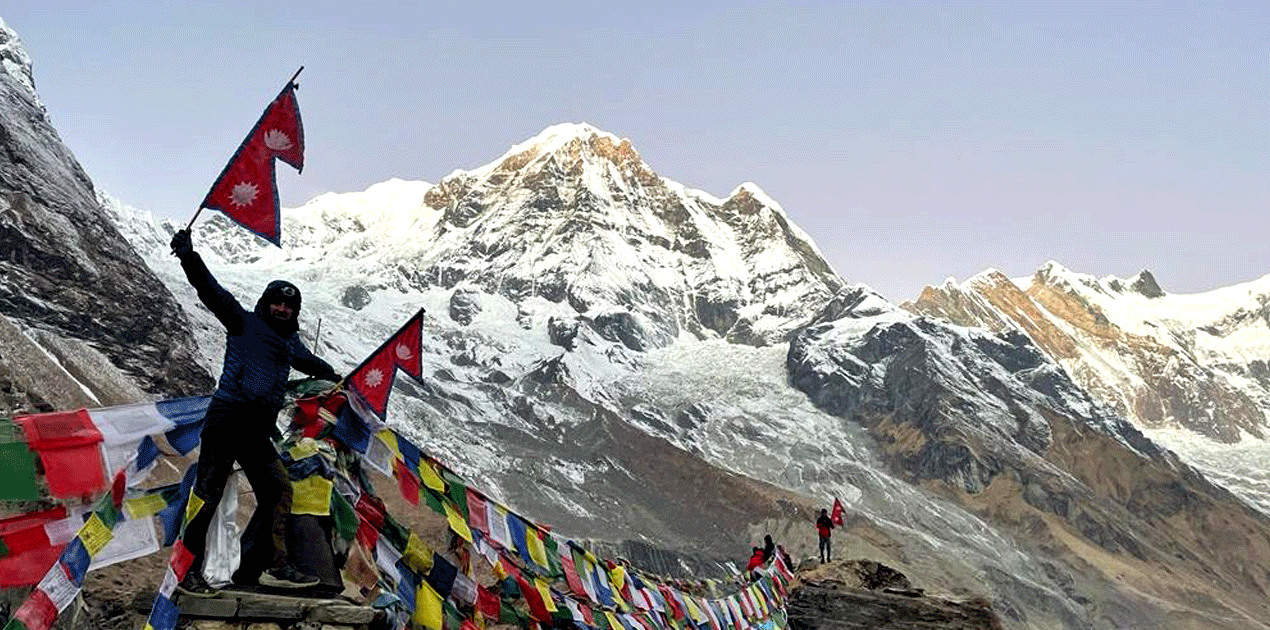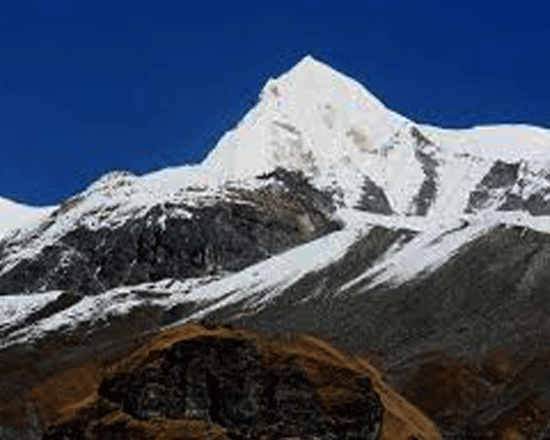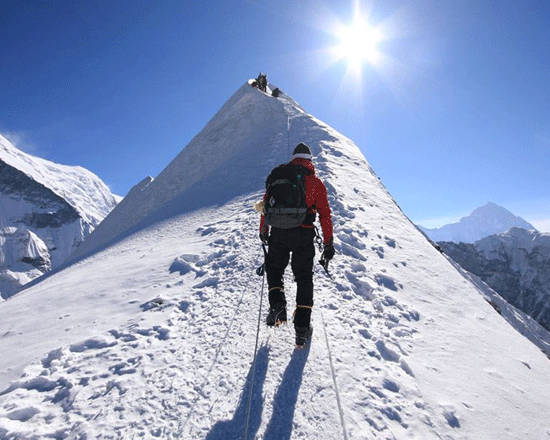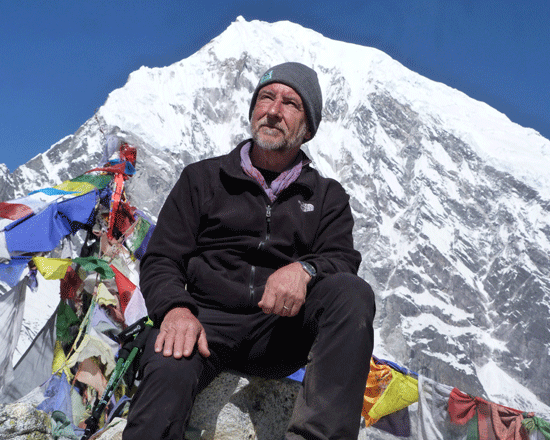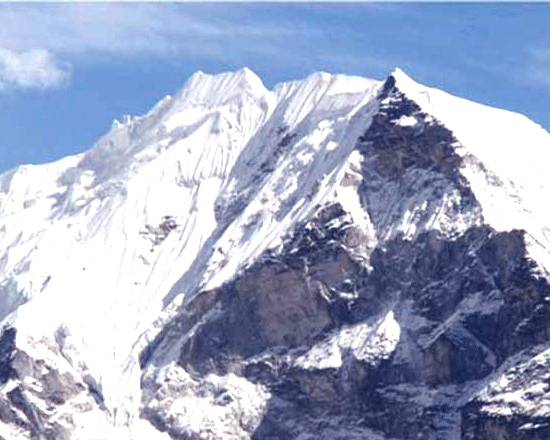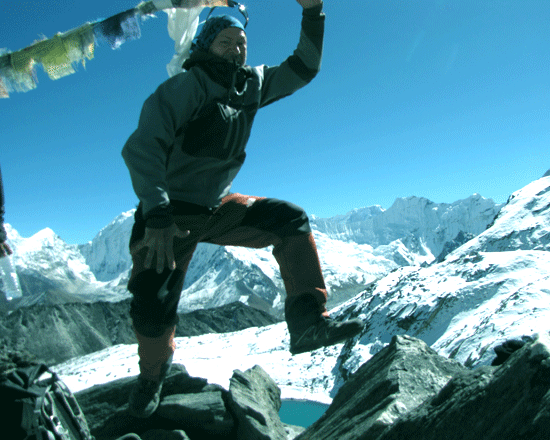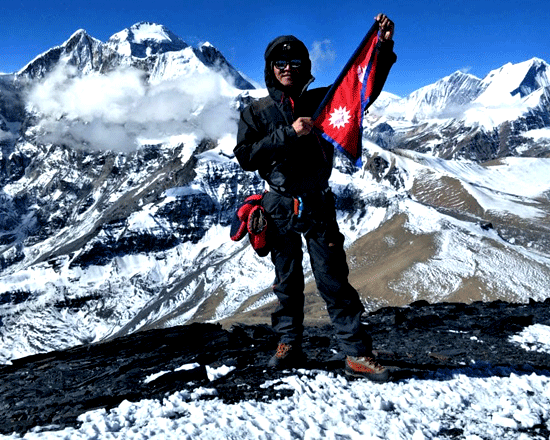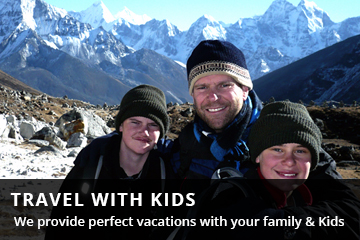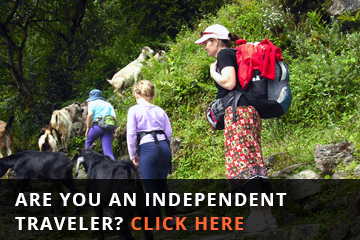Tent Peak Climbing
Tent Peak Climbing
Peak Climbing In NepalTrip Facts
Since the terrain can be hard and the days long, hikers on these treks should be in good physical condition and have some previous mountain walking experience. Steep climbing may be involved, although it is never necessary to use ropes. Treks at this level can he arranged for periods of 16 to 21 days. Typically, a gradual ascent through a green river valley will lead you up to a number of high passes, where you will reach the altitude of 5416m. Often times, you will get a close insight into the Tibetan culture. Participants should expect to trek above 5416m/17872ft.
Mode of Travel : Land100%
Overview
Tent Peak Climbing 15-day package itinerary
Tent Peak, also known as “Tharpu Chuli Peak,” stands as a testament to the grandeur of the Annapurna Range Himalayas. This remarkable adventure beckons climbers to a height of 5,663 meters, offering an exhilarating journey amidst some of the world’s most awe-inspiring landscapes. In this comprehensive guide, we delve into the enchanting world of Peak climbing, exploring its challenges, rewards, and the breathtaking vistas it bestows upon those who dare to ascend.
A Panoramic Paradise view from Tent Peak climbing
One of the major highlights of the Tent Peak climbing expedition is the astounding 360-degree panorama of the Annapurna massif that unfolds before your eyes. From the summit, you witness a visual feast of snow-capped peaks and verdant valleys. The pristine beauty of the Annapurna region reveals itself in all its glory, imprinting an indelible mark on your soul. It’s a visual masterpiece that captures the essence of the Himalayas.
A Manageable Challenge
Compared to its lofty neighbors of Tent peaks like Singa Chuli (6,501 m) and Him Chuli (6,441 m), Tent Peak climbing offers a great view and a great climbing experience. While it presents its own set of challenges, it is less daunting in terms of altitude and technical difficulty. This makes it an ideal choice for climbers seeking adventure without the extreme demands of peaks like Island Peak, Ama Dablam, and Mera Peak.
The Tent Peak Climbing Itinerary
The Tent Peak Climbing adventure begins with a scenic drive from Pokhara to Naya Pul, followed by a series of treks that lead you through Poon Hill, Tadapani, Chhomrong, Dovan, MBC (Machapuchare Base Camp), and ABC (Annapurna Base Camp). As you journey towards the base camp, you’ll encounter teahouses that provide comfortable accommodation. However, once you embark on the climb itself, you’ll rely on camping facilities for your stay.
After conquering the summit of Peak, the journey continues with a descent to Annapurna Base Camp, followed by a trek back to Pokhara. This homeward journey takes you through picturesque Gurung villages, enchanting rhododendron jungles, rejuvenating hot springs, the swift-flowing MODI river, and terraced rice paddies. The entire adventure spans approximately 15 days, commencing and concluding in Kathmandu.
The Best Time to Climb the Tent Peak
The best time to climb Tent Peak is typically during the spring (April to May) and autumn (September to November) seasons. During these times, the weather tends to be more stable with clear skies, making climbing conditions optimal. Spring offers warmer temperatures and longer daylight hours, while autumn provides cooler temperatures and stunning views of colorful foliage. It’s essential to check weather forecasts and climbing conditions before planning your ascent, and consider hiring a reputable guide or joining an organized expedition for a safe and enjoyable experience
The Challenge: Classified as 2C
In terms of difficulty, this Peak climbing, the Peak is classified as 2C by the Nepal Mountaineering Association. This classification signifies that climbers will need essential mountaineering equipment such as ropes, crampons, and ice axes for the ascent. Before the summit day, our expert climbing guides will provide comprehensive training on climbing techniques and the proper use of this equipment.
Physical Fitness and Experience for this Peak
While a high level of physical fitness is essential for this adventure, prior experience with high-altitude trekking is advantageous. Basic climbing experience is also recommended. The daily routine during the Tent Peak climb involves 6-7 hours of trekking at high altitudes for 15 days. Climbers with pre-existing medical conditions should inform our team to ensure a safe and successful expedition.
Expert Guidance
Let us join you for your Tent Peak climbing in Nepal. Our team of experienced local climbing guides and porters possesses intimate knowledge of Tent Peak and the surrounding Annapurna Region. Their expertise ensures your safety, comfort, and an unforgettable experience. Our competitive package cost covers all expenses listed in the itinerary, leaving no room for hidden fees or surprises.
The Enchanting Trails to Tent Peak Climbing
The journey to Tent Peak climbing is not just about reaching the summit; it’s an immersive experience that exposes you to the captivating beauty of the Annapurna region. As you trek towards the peak, you’ll pass through charming Gurung villages that nestle amidst the breathtaking landscape. These traditional villages provide a glimpse into the region’s rich cultural heritage and offer insights into the daily lives of the local inhabitants.
The trail is also adorned with natural wonders, including vibrant rhododendron forests that burst into a riot of red, pink, and white hues during the blooming season. Walking through these enchanting forests is a visual feast, captivating nature enthusiasts at every turn.
Further along the path, lush green rice paddies stretch across terraced fields, creating a picturesque landscape against the backdrop of towering mountains. This harmonious blend of fertile land and majestic peaks is a sight to behold, a testament to the natural beauty that surrounds you.
A Journey of Wonders
Throughout the Tent Peak climbing trek, you’ll have the opportunity to soak in natural hot springs, providing a well-deserved respite for your tired muscles. These rejuvenating pools offer a serene setting to relax and unwind, cocooned with nature’s beauty.
Island Peak (Imja Tse) and Mera Peak both stand over 6,000 meters (19,685 feet) in altitude, whereas Tent Peak reaches 5,663 meters (18,580 feet). The altitude difference alone makes Island Peak and Mera Peak more physically demanding. Additionally, Island Peak and Mera Peak may involve glacier crossings, steep ice slopes, and more exposed climbing sections compared to Tent Peak. As a result, climbers attempting Island Peak and Mera Peak generally require a higher level of technical skill, experience, and physical fitness.
However, while this Tent Peak climbing may be less challenging in comparison, it still offers a rewarding mountaineering experience with stunning scenery and a sense of adventure. It can be an excellent choice for those seeking a Himalayan climbing experience with moderate difficulty.
Detail Itinerary
- Day 01: Drive to Pokhara (200 km, 6/7 hours driving). Overnight stay at a selected hotel near Lakeside.
- Day 02: Drive to Nayapul (42 km, 2 hours driving) and trek to Tirkhedunga (1520 meters, 3 ½ hours walking). Hiking distance: Approximately 9 kilometers. Overnight stay at a lodge.
- Day 03: Trek to Ghorepani (2853 meters, 6/7 hours walking). Hiking distance: Approximately 13 kilometers. Overnight stay at a lodge.
- Day 04: Visit Poon Hill early in the morning, then trek to Tadapani (1920 meters, 5 hours walking). Hiking distance: Approximately 12 kilometers. Overnight stay at a lodge.
- Day 05: Trek to Chhomrong (1920 meters, 5 hours walking). Hiking distance: Approximately 10 kilometers. Overnight stay at a lodge.
- Day 06: Trek to Dovan (2505 meters, 5 hours walking). Hiking distance: Approximately 10 kilometers. Overnight stay at a lodge.
- Day 07: Trek to MBC (3700 meters, 4/5 hours walking). Hiking distance: Approximately 8 kilometers. Overnight stay at a lodge.
- Day 08: Trek to ABC (4130 meters, 2/3 hours walking). Hiking distance: Approximately 3 kilometers. Overnight stay at a lodge.
- Day 09: Trek to Tent Peak high camp (4850 meters, 5/6 hours walking). Hiking distance: Approximately 6 kilometers. Overnight stay in tents.
- Day 10: Summit day for Tent Peak (5695 meters) and return to ABC (6/7 hours walking). Hiking distance: Approximately 12 kilometers. Overnight stay at a lodge.
- Day 11: An Additional day is reserved for bad weather conditions.
- Day 12: Trek back to Dovan (5 hours walking). Overnight stay at a lodge.
- Day 13: Trek back to Sinuwa (5 hours walking). Overnight stay at a lodge.
- Day 14: Trek back to Naya Pul (6 hours walking) and drive to Pokhara. Overnight stay at a selected hotel in Pokhara.
- Day 15: Drive to Kathmandu (200 km, 6/7 hours driving) by tourist bus.
Cost Included
- Lodge accommodations till base camp and a tent during your climb in the high camp.
- Kathmandu / Pokhara / Kathmandu by tourist bus.
- three time meals during the trek and climbing time
- Fluent in English, with experience in government training experience guiding climbing Sherpa, cook, and required porters, one porter for two pax.
- ACAP Permit, Peak permit,
- Equipment clothing for the guide, porter, and staff, including climbing Sherpas.
- Two nights' accommodation in Pokhara.
- Kitchen crew.
- Climbing equipment: Ice hammer, Rope, Snow bar, Ice-screw,
- Foods and Accommodations for Nepal staff.
- Wage and Insurance for all staff.Guide: Sherpa, porters, cook, Meals, lodge, insurance, equipment, salary, etc.
Cost Excluded
- Personal climbing gear and clothing (available for hire).
- Hotel in Kathmandu
- Lunch and dinner, while in Pokhara,
- all beverages, Soft and hard table drinks such as coke, beer,
- drinking water/mineral water, etc,. During the trek.
- Hot shower, laundry
- personal insurance
- Tip etc.

